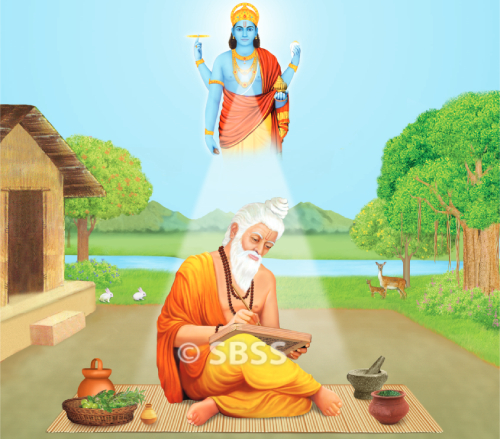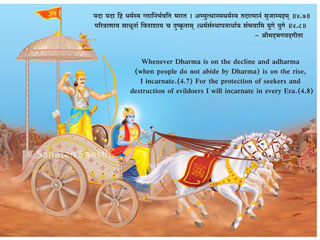Ayurveda for a healthy life ! – 12/2023


5. Tonics for Pitta constitution and pittaja (Pitta induced) diseases
Amalaki (Indian gooseberry), anantamula, gulvel, shatavari, bala, atibala, nagabala, sandalwood, ghee, tikta ghruta, jivak, ruihabhaka, meda, kakoli, kshirakakoli, mudgaparni, jivanti, jyesthamadhu (glycerrhiza), jatamansi, musali, hirda (chebulic myrobalan), mandukaparni and shatavarighrut moravala.
6. Beneficial and harmful diet and activity for Kapha constitution and kaphaja (Kapha induced) diseases
| Beneficial diet | Harmful diet | |
| 1. Cereals | Yava (barley) and old cereals | New rice and wheat |
| 2. Pulses | Chana (chick pea), masur (lentil), matki (moth beans), kulthi (horse gram) and mung (green gram) | Udid (black gram) and black peas |
| 3. Nuts and dry fruits | Walnut, almond and pista (pesta nuts) | Coconut and groundnut |
| 4. Vegetables | Brinjal, shirale (Ridge gourd), kelphul (banana flower), radish, snake gourd, red pumpkin, karela (bitter gourd) and suran (yam) | Potato, tondali (ivy gourd), dudhi (bottle gourd) and sweet potato |
| 5. Fruits | Papaya (papaw) | Pineapple, kharbuj (muskmelon), jackfruit, toddy fruit, banana, sweet lime, ramphal (bullock’s heart), custard apple bhokar (Indian cherry), karavanda (black currants), orange and grapes |
| 6. Milk products | Buttermilk after extracting the cream | Curds, ghee, khir, milk cream and shrikhand |
| 7. Meat | Meat of wild animals | Fish, animal fat and mutton |
| 8. Oil and oilseeds | Till (sesame seeds), mustard and errand (castor) oil | – |
| 9. Spices | Garlic, asafoetida, sunthi (dry ginger), cumin seeds, pepper, mustard and coriander seeds | Poppy seeds and small cardamom |
| 10. Drinking water | Hot water | Cold water |
| 11. Bath | Hot water | Cold water |
| 12. Exercise | Excessive walking, indulging in sex, riding on a horse or an elephant | – |
| 13. Miscellaneous | Getting angry, fasting and smoking | Excessive eating, sleeping during the day, sitting in one place for a long time and taking an oil massage |
7. Tonics for Kapha constitution and kaphaja (Kapha induced) diseases
Shilajit, guggul, aragvadha, jatamansi, haritaki (cebulic myrobalan), jivanti and kshirakakoli.
8. Season
A. Effect of seasons on man
It is a common experience that one feels hungry, energetic and enthusiastic during the winter, but one feels dull and less hungry during summer and the rainy season.
B. Seasons and the three doshas
The taste dominant in food and water in a particular season usually tends to aggravate the corresponding dosha, which accumulates in the body in that season. The only exception to this is the dominant astringent taste in vasant (Spring), which neutralises the increase in Kapha. The dominant sweet taste in hemant (Winter), tends to increase Kapha as expected. However, this does not adversely affect the body, as the strong digestive power in winter digests and assimilates the excessive Kapha and converts it into tissues.
The environmental changes in various seasons and food items are the most powerful factors which affect the doshas.
Diet can be voluntarily controlled. But one can protect oneself against the external environment, only to a limited extent. The environmental factors act directly on the skin and the respiratory tract and affect the entire body, through the circulating blood.
If the qualities of the season are opposite to those of one’s constitution, one’s health improves. The cool environment in winter is good for a person with a Pitta constitution, but is bad for people with Vata and Kapha constitutions.
B1. Seasons and Vata
B1 A. Accumulation of Vata in the body (Vatachaya) : In summer one’s strength and digestive power are at ebb and one loses body water, through perspiration. The dry and light qualities dominant in Nature and food result in accumulation of Vata and lead to the vatachaya stage. The heat of summer does not allow excessive accumulation of Vata (Vataprakopa).
B1 B. Excessive accumulation of Vata (Vataprakopa) : In the rainy season, the digestive power and natural strength continue to be at a low. The sudden change in temperature from hot to cold due to rains, results in further accumulation of Vata in the body, leading to the stage of vataprakopa.
B1 C. Allaying the increased Vata (Vataprasham) : The damp surface of the ground and the heat in autumn (Sharad) season, allay the increased Vata.
B2. Seasons and Pitta
B2 A. Accumulation of Pitta in the body (Pittachaya) : The heat in summer (Grishma) leads to increase in the body heat and
exhaustion of the body. The strength and digestive power are further reduced in the rainy season, due to muddy water. Food and water are dominant in the sour taste. The dominant sour taste and weak digestive power result in accumulation of Pitta in the body in this season, leading to the pittachaya stage. The cool environment in this season, does not allow Pitta to accumulate
in excess.
B2 B. Excessive accumulation of Pitta (Pittaprakopa) : The heat in autumn (Sharad), results in further accumulation of Pitta giving rise to the pittaprakopa stage.
B2 C. Allaying the increased Pitta (Pittaprasham) : The sweet taste dominant in Nature and food and the cool environment, subdue the increased Pitta in winter (Hemant).
B3. Seasons and Kapha
B3 A. Accumulation of Kapha in the body (Kaphachaya) : In early winter (Hemant), the physical strength and the digestive power are good. Hence, one feels very hungry and one eats to one’s satisfaction.
In late winter (Shishir), the food habits continue to be the same, but the digestive power slightly reduces. This along with
the cold environment causes accumulation of Kapha and leads to
the stage of kaphachaya, in the body.
B3 B. Excessive accumulation of Kapha (Kaphaprakopa) : In spring (Vasant), the hot environment causes liquefaction of the accumulated Kapha and gives rise to the stage of kaphaprakopa.
B3 C. Allaying the increased Kapha (Kaphaprasham) : The dry, light and hot qualities dominant in summer (Grishma) subdue
the increased Kapha.
Vata accumulates in the pre-monsoon period and in the monsoon due to the cold and damp environment.
Pitta accumulates in summer and the pre-monsoon period due to the hot environment, the dominant pungent and sour taste and weak digestive power.
Kapha accumulates in late winter (Shishir), due to the cold environment.
In the pre-monsoon period and the monsoon, all the three doshas are vitiated due to lack of strength, weak digestive power, sudden change in environmental factors, damp and moist climate and indigestion. On the other hand, in early winter (Hemant), all the three doshas are in a naturally balanced state.
C. Seasons in North and South India
The various months of the Hindu lunar calendar and those of the English calendar along with the date related to the seasons in North India and South India are enlisted in the table ahead.
C1. Seasons in North India
| Varsha (Monsoon) | Sharad (Autumn) | Hemant (Early winter) |
Shishir (Late winter) |
Vasant (Spring) |
Grishma (Summer) | |
| Months of the Hindu lunar calendar | Ashadha Shravan | Bhadrapad, Ashwin | Kartik, Margashirsha | Pousha, Magha | Phalgun, Chaitra | Vaishakha Jyeshtha |
| Month and date as per the solar calendar | 22nd June to 21st August | 22nd August to 21st October | 22nd October to 21st December | 22nd December to 21st February | 22nd February to 21st April | 22nd April to 21st June |
C2. Seasons in South India.
| Sharad (Autumn) |
Hemant (Winter) | Vasant (Spring) | Grishma (Summer) | Pravrut (Pre-monsoon) |
Varsha (Monsoon) | |
| Months of the Hindu lunar calendar | Ashwin, Kartik | Margashirsha, Pousha | Magha, Phalgun | Chaitra, Vaishakha | Jyeshtha, Ashadha | Shravan Bhadrapad |
| Month and date as per the solar calendar | 22nd September to 21st November | 22nd November to 21st January | 22nd January to 21st March | 22nd March to 21st May | 22nd May to 21st July | 22nd July to 21st September |
C3. Due to global warming the seasonal changes are seen in the North and South regions in India hence area wise study is required.
| Recently, Research has shown that global warming, triggered by climate change, increases the fluctuations in the monsoon resulting in both long dry periods and short spells of heavy rains. Decent amount of rainfall is noticed in August & September in North region of India. |

 Radiant Thoughts of Sachchidananda Parabrahman (Dr) Jayant Athavale
Radiant Thoughts of Sachchidananda Parabrahman (Dr) Jayant Athavale Law banning Conversion of Religion is against Individual Freedom : Babbles Former Judge S Muralidhar
Law banning Conversion of Religion is against Individual Freedom : Babbles Former Judge S Muralidhar Editorial : Khalistan, Balochistan and Pakistan
Editorial : Khalistan, Balochistan and Pakistan After India becomes a ‘Hindu Rashtra’, Russia will embrace Hinduism and spread it globally : Nostradamus’ Prophecy
After India becomes a ‘Hindu Rashtra’, Russia will embrace Hinduism and spread it globally : Nostradamus’ Prophecy ‘Halt Public Spending on Aurangzeb’s Tomb, Prioritise Maharashtra’s Heritage’ : HJS
‘Halt Public Spending on Aurangzeb’s Tomb, Prioritise Maharashtra’s Heritage’ : HJS Noise Pollution, Loudspeakers, and the Law
Noise Pollution, Loudspeakers, and the Law